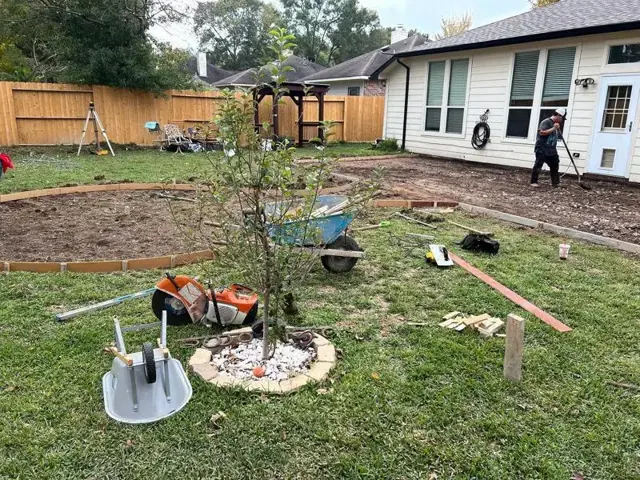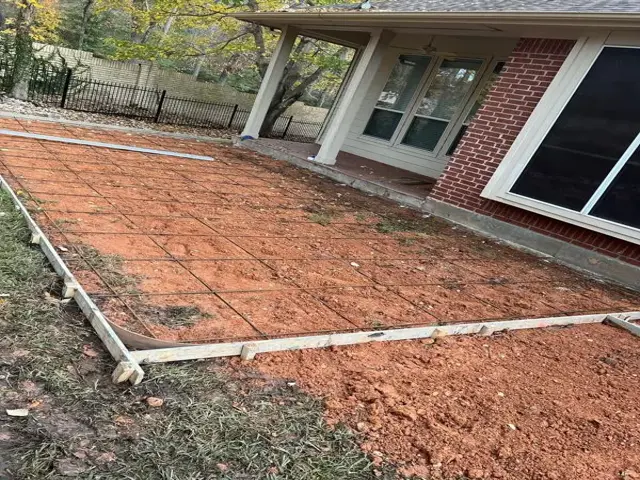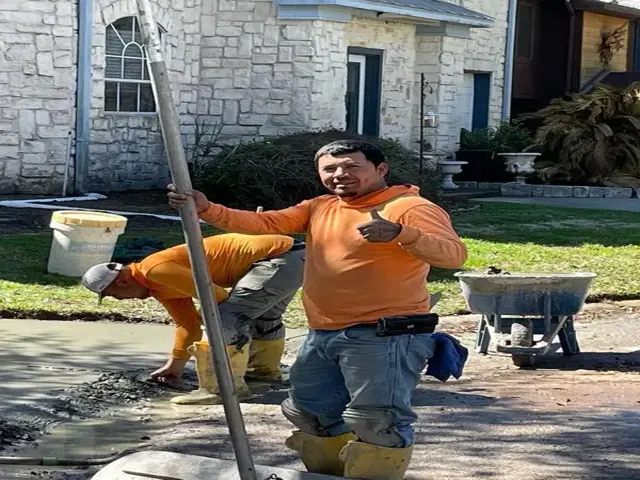Pouring concrete involves several steps to ensure a strong and durable structure. Here is a detailed guide on pouring concrete, specifically using 3500 PSI concrete reinforced with 3/8″ rebar.
Preparation:
- Determine the dimensions and layout of the concrete structure, ensuring proper measurements and formwork.
- Obtain the necessary permits, if required by local regulations.
- Gather the required tools and materials, including concrete mix, rebar, formwork, reinforcement mesh (if needed), shovels, wheelbarrows, concrete vibrator, leveling tools, and safety equipment (gloves, goggles, boots, etc.).
Excavation and Base Preparation
- Excavate the area where the concrete will be poured, ensuring a depth that accommodates the desired thickness of the concrete and the reinforcement layers.
- Compact the soil or sub-base using a compactor or hand tamper to provide a stable foundation. Install a layer of crushed stone or gravel as a base, leveling and compacting it to further enhance stability and drainage.
Installing Formwork

- Construct formwork using plywood or other suitable materials to create the desired shape and dimensions for the concrete structure.
- Ensure the formwork is securely anchored to the ground and properly aligned.
- Install bracing or supports to prevent the formwork from bulging or shifting during the pouring process.
- Apply a form release agent to the inside of the formwork to facilitate easy removal once the concrete has cured.
Reinforcement

- Cut and bend the 3/8″ rebar to the required lengths and shapes, following the structural engineer’s specifications.
- Place the rebar within the formwork, ensuring proper spacing and overlapping as per the design.
- Use wire or rebar chairs to elevate the rebar from the base and secure it in place to prevent movement during concrete pouring.
- If reinforcement mesh is required, lay it over the rebar, ensuring it covers the entire area evenly.
Mixing and Pouring Concrete
- Follow the instructions provided by the manufacturer to mix the concrete. For 3500 PSI concrete, typically the mix ratio is 1 part cement, 2 parts sand, 3 parts coarse aggregate, and an appropriate amount of water.
- Use a concrete mixer or a wheelbarrow to mix the concrete thoroughly until it reaches a consistent and workable consistency.
- Start pouring the concrete into the formwork, filling it in layers to avoid excessive air pockets. Use a shovel or concrete pump for larger projects.
- As you pour each layer, use a concrete vibrator to remove any air bubbles and ensure proper compaction of the concrete. Move the vibrator throughout the poured area to ensure even distribution.
- Continue pouring and vibrating until the formwork is completely filled, slightly overfilling it to account for any settling.
Finishing and Curing
- Use a screed board or straightedge to level the concrete surface, moving it back and forth across the formwork while resting on the edge forms.
- Smooth the surface using a bull float to eliminate any high spots or imperfections.
- Use a trowel to create a smooth, even finish on the surface. Repeat this step multiple times as the concrete begins to set, using a steel trowel for the final finish.
- Install control joints, if necessary, to minimize cracking caused by shrinkage during curing.
- Cover the freshly poured concrete with plastic sheeting or use a curing compound to slow down moisture evaporation and promote proper hydration. Maintain the curing conditions as per the concrete mix specifications.
- Allow the concrete to cure undisturbed for a minimum of 7 days, or as recommended by the manufacturer or structural engineer.

Remember, concrete pouring is a complex process that requires careful planning, adherence to safety guidelines, and often the involvement of professionals. It’s essential to consult with a structural engineer or concrete contractor to ensure the specific requirements of your project are met.



